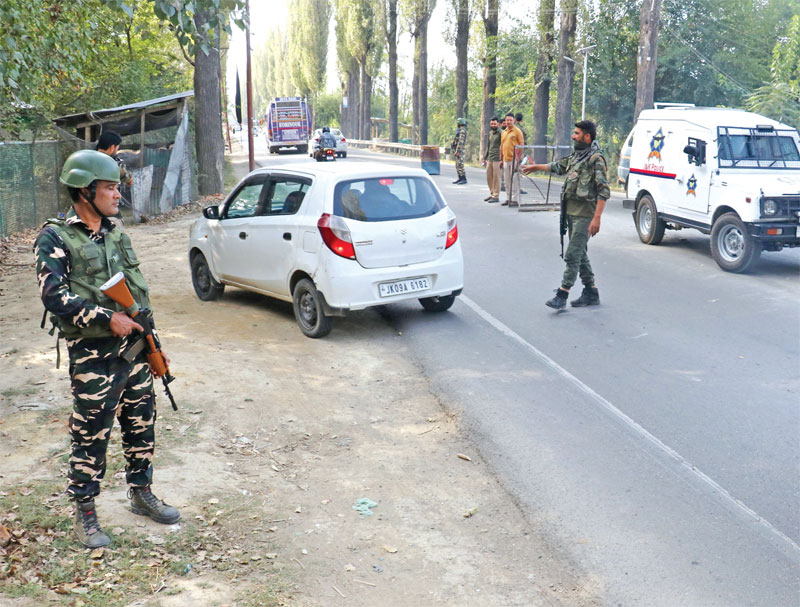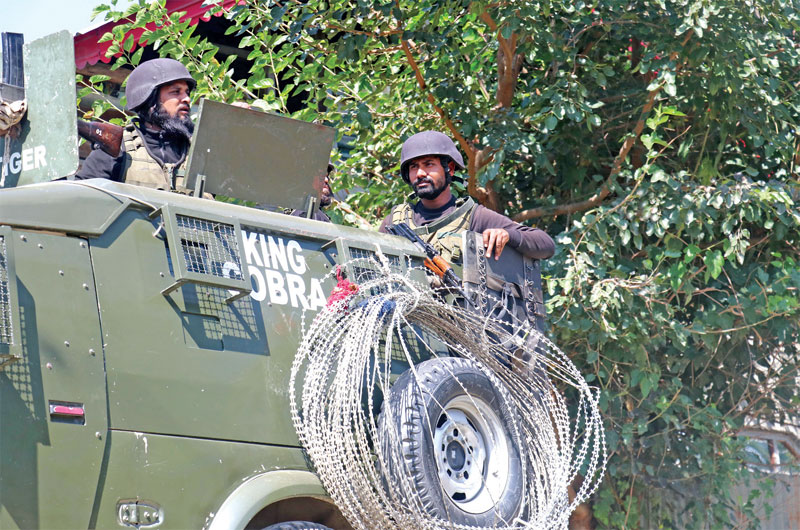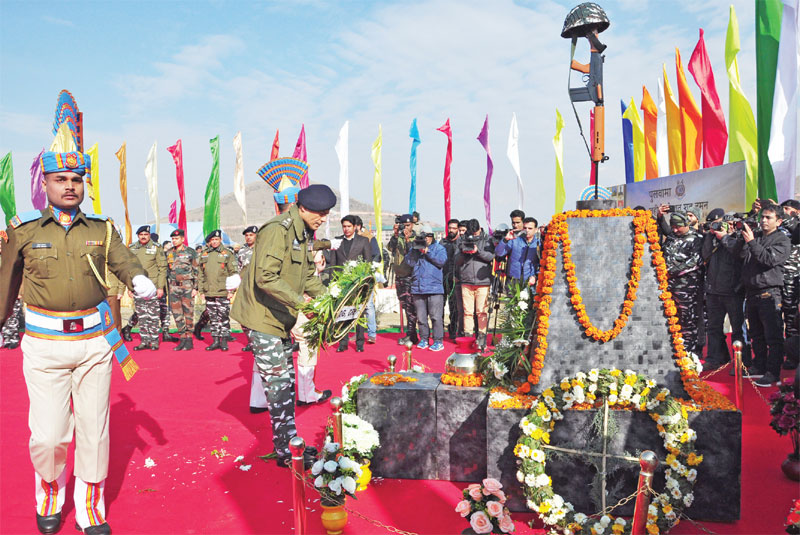Only finding faults after an incident is not enough, field commanders must find ways to accomplish tasks
 Brig. Ravi Palsokar (retd)
Brig. Ravi Palsokar (retd)
Counter-insurgency operations tend to be protracted and the main reason is that most problems are intractable as neither adversary is prepared to compromise. The state has the force and weight of law behind it and the insurgents, besides the cause which they deeply believe in, often have the backing of external forces. These combine to allow the movement to sustain over long periods of time.
Occasionally an initiative by the government will seem promising and may gain traction only to be nullified by the lack of resolute follow-up or change in political circumstances. There are so many ifs and buts in conducting counter-insurgency operations that leaders at all levels of command are presented with a new set of challenges and yet overall, the situation remains the same. Additionally, there are turnovers in the troops deployed and the new troops must reorient themselves, get familiarised and learn to operate before they become effective.
Above all, the quantum of progress is difficult to measure. Soldiers tend to measure success by the damage caused to the insurgents, that is primarily in terms of kills and capture of warlike material. But as experience has shown, these gains are ephemeral and one usually has to get back to the start. What can really make a difference is the political will to deal with the insurgents on a socio-political plane so that the disaffected parties are brought back into the mainstream of society. Place now the role of the army and its leaders in this context and the challenges at once become apparent.
Senior commanders, this includes unit as well as field formation commanders, on arrival or appointment to a post inherit a situation that has developed over time. They do not have the latitude to change the basics whether in terms of deployment, methods of operations and the overall aim, and yet they are required to perform and show results. At the heart of such operations is leadership. It must be said at the outset that this is not a dissertation on leadership per se, for many eminent persons have written on the subject. This attempt is to highlight leadership requirements in counter-insurgency operations and the experience of those who have been involved.

Know Yourself, Adversary
Any unit or formation or its commander who takes over responsibility in a counter-insurgency environment has available to him the knowledge bank that has been built up over the years by those who have served in the area. Rarely does one move into a vacuum of information of terrain or the adversary, as in the case of the Indian Peace Keeping Force (IPKF), which was inducted hurriedly into Sri Lanka in 1987. Hopefully, that was a one-off.
Returning to the main point, any commander who is briefed about the situation on taking over needs to first of all familiarise himself with the terrain, current situation and other facets that are relevant such as socio-economic conditions, social work or assistance provided by the military to the locals. The last is important in building civil military relations and could be as basic as ensuring that water trucks do a regular round in remote areas so that the village women do not have to carry water over long distances to their houses. Or it could be the running schools or providing other humanitarian assistance when required. Common experience is that medical help is always welcome and helps build good relations. In most areas such activities are essential to conducting counter-insurgency operations.
In such an environment, a commander’s task is to spot gaps in the information about the insurgents and their activities against the dynamics of an ever-changing situation. Even trickier is to spot a pattern in the activities of the insurgents or their helpers from across the border or even across districts. While the science of artificial intelligence is at a nascent stage, it should be possible to explore how it can be used to spot gaps, similarities, patterns in insurgent activities that would not normally occur to individuals who are looking at the same picture, day in and day out. The point is that insurgent operations are unpredictable and rely on surprise and this is what must be looked for and guarded against. Experience again tells us that complacency is a common failing in all soldiers.
A commander in these times has to pay particular attention to perception management. The pervasive nature of social media means that information spreads rapidly and the adversary also uses the same social media. It is easy for him to spread misinformation. Any attempt at a cover-up or denial of an incident is likely to blow up into a major public relations disaster. The security forces have to be particularly conscious of this factor and managing the information overload requires special training and a dedicated staff. Commanders would do well to remember that their own men also use the same social media and it is important to pay attention to their perception. Often, openness and sincerity are likely to pay greater dividends. All this has to be overlaid by cyber security, both defensive and offensive.
Be Prepared
The Boy Scouts’ motto is an apt representation for counter-insurgency. Troops who are deployed in an area over long periods of time have a host of administrative tasks to perform comprising their daily routine such as ration supply and replenishment, training or movement of troops on relief.
In this seeming hive of activity, actual operations against the insurgents are also likely to become routine events. The problems start when routine is interrupted by insurgents’ violence against security forces or coercion of civil population by different armed groups to collect money or recruits or medical treatment. It is common to put together a quick reaction team, usually earmarked but engaged in some other task because there is inactivity over a long time and the reaction that follows is usually slow and ineffective.
There is a converse to this in areas where activity never seems to stop and the same troops are flogged repeatedly leading to loss of efficiency because of sheer fatigue and poor management on the part of the unit or the formation. All commanders must be on guard against such situations and keep a ready reserve that can be deployed at short notice. It needs noting that reserves should be located keeping in mind both time and space.
Helicopters can possibly deliver a quick reaction force in time, but this means that both the air and ground effort must be co-located and trained together, otherwise it becomes just one more band-aid effort. Unfortunately, this tends to be the norm and the skill of all commanders is to be prepared (in their minds at least) to react and have contingency plans ready. But there are pros and cons in every situation and a nimbler decision-making process by the commander is essential. Anticipation is the key.

Leadership and Supervision
At first sight, the difference between leadership and supervision is obvious and yet in practice, it is not commonly followed. Let me explain. Given the vast areas of responsibility of senior formation commanders even in counter-insurgency, the calls on the time of a senior commander are many and usually he is presented with a fait accompli when a mistake has occurred resulting in loss of life and/or material.
It is also experienced that errors tend to be more of omission rather than commission, when orders formulated over time are not followed for various reasons. The most common corrective is to point out the mistakes, reaffirm the existing orders and procedures and tell the subordinates to get on with the job and do better.
Can anything else be done? No one ever takes the trouble to find out the reasons behind the errors, why despite orders they were not followed. The staff unfortunately, usually sitting far from the area of incident and unaware of what really happened, can draw the wrong impressions about the corrective action required. Lt Gen. R K Nanavatty (Retd), one of the foremost field commanders of the past, writes: “Realisation must dawn on formation commanders and the staff that in war (as indeed in peace too) they are on the same side as their units. Their task is to facilitate and find ways to accomplish assigned tasks NOT simply to fault and criticise.” Wise words.
It must be added that a formation commander can use his reserves to reinforce an area that needs attention because something has gone wrong. He can then personally oversee their deployment and utilisation. A senior officer taking charge as well as responsibility can help in not only restoring a situation but also morale. This has to be done in a manner which does not let down subordinate commanders in the eyes of their command or else it can wreck morale. Such actions help units and formations to regain their poise and effectiveness. Corrective action against erring individuals can follow later when matters have settled down. It is easy enough to say this but difficult to implement.
Senior officers willing to assume responsibility for the mistakes of their subordinates will find themselves succeeding and becoming popular over time. Often, senior officers will criticise, blame and go away, affecting the confidence of subordinates. It is a sad reflection on the senior leadership when this happens. This is not to say there are not good leaders. Many are but far too many just look for scapegoats.
This leads to the next point that commanders must eschew short term fixes for long term gains. The command tenures in our army are far too short for most commanders to prove their leadership, particularly in those areas where action is intense. Success is judged by results in terms of kills, capture of arms and ammunition and so on. What this results in is that the local populace is subjected to unnecessary rigors and restrictions and the long-term effects of this sort of activity tends to worsen a situation. I do not know of many instances where the situation has been handed back to the civil administration because armed intervention has become unnecessary. The few cases where insurgency has been eradicated, Tripura for example, the correctives have been because of an enlightened political leadership rather than military action.

Training Matters
This is a subject whose importance is understood by all but given least attention. The only level where those who train their command and lead their troops into action is at the unit level. Often a unit commander is given a set of instructions and left to his own devices. It is time to relook at this sequence. After all, it is a unit commander’s responsibility to train his command and then lead them into action. However, rarely one sees a formation train and be led by the same commander in battle. This is a contentious point. Take two examples.
The 1971 war was overseen by the chiefs long before action commenced. In the army, General Sam Manekshaw (Retd) personally went round formations and warned them to train and get ready. The air force and the navy chiefs did the same and the results are there for all to see. On the other hand, the induction of the IPKF in Sri Lanka remains a lesson in how not to do such a thing. The 54 Infantry Division, a so-called air assault division, had the unenvious task of changing from peace keeping to peace enforcing without any notice or preparation. It is easy enough to blame the divisional commander but what about those who led him into that situation? I took over a brigade in Sri Lanka just after it had become operational and the commander who had trained and commanded the formation for two years went off for a course. Was he not the best person to command his formation in action?
The point is that training for operations must be done by those who are going to lead them into action. This applies right down the line from unit and formation commanders till the lowest level of section and platoon commanders. All commanders would do well to remember that cohesion in a unit or sub-unit is the most important factor in achieving an operational task. It is acknowledged that field formations not operationally deployed are constantly training as formations both with and without troops, but we need to look at how many commanders have trained and deployed with their formations for any length of time.
The induction of 6 Mountain Division for the Kargil operations or the 8 Mountain Division to the Kashmir valley shows how formations deployed as a whole under their own command and control structure can prove effective.
The other point relates to maintenance of morale. In operations, physical training for conditioning of troops tends to be a part of conduct of operations. As far as physical fitness goes, this is sufficient, but not enough attention is paid to recreation. We need to be reminded that earlier the subject was known as ‘Physical Training and Recreation.’ The monotony and the tensions generated by continuous operational activity must be broken by physical games, howsoever simple they might be so that the soldiers have something to divert their minds and laugh and be happy without awaiting the next operation.

Leadership is Key
It is universally acknowledged that leadership is the most important factor in war. It is even more important in counter-insurgency where the operations are prolonged and there is a constant turnover of units and individuals. At the same time, we cannot afford to overlook or neglect the role of junior leaders and they too in turn need equal attention and training.
Leaders must also cater to the latest technology and incorporate artificial intelligence in assessing information about the adversary. Perception management has now assumed importance and there is an information battle to be won including cyber security.
Lastly, it must be remembered that cohesiveness of units and formations is as important as all other factors and must be maintained. All this is possible when good logistics support operations allowing leaders to train and operate without looking over their shoulders.

